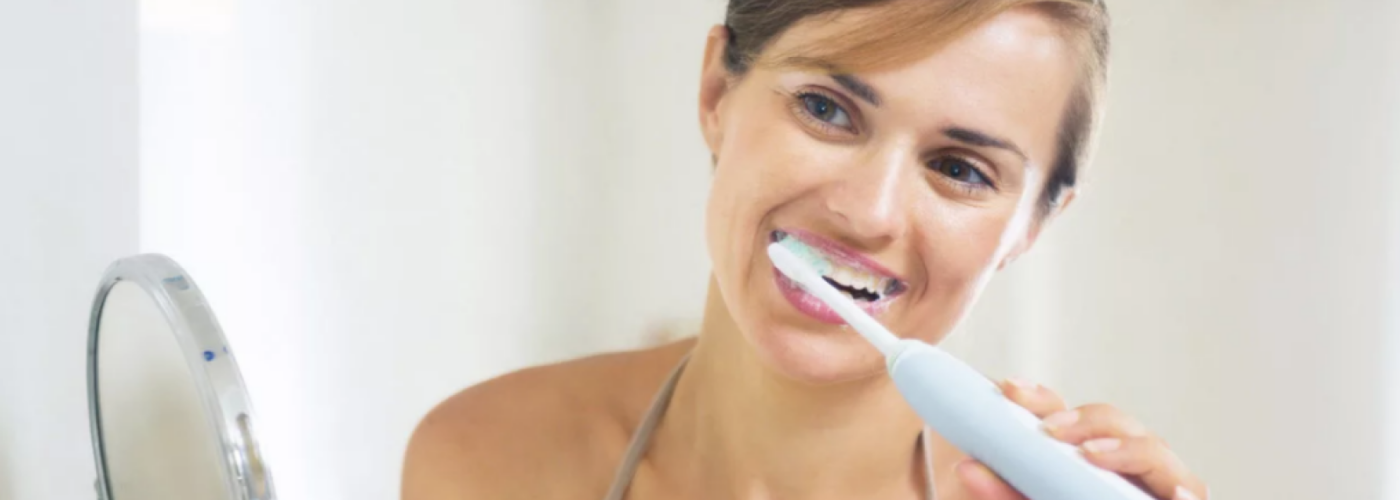It’s an issue that can cause a lot of debate, but is an electric toothbrush more effective than a manual toothbrush when it comes to cleaning and taking care of your pearly whites?
We investigate the key differences between the two, and whether you really need to fork out for that sparkly new electric brush.

Electric toothbrush vs manual toothbrush
Electric toothbrush
- Electric toothbrushes do a lot of the work for you thanks to the power rotation that loosens plaque. This can be a huge benefit for people with arthritis or other conditions which limit dexterity.
- They are popular with children and teens who think electric toothbrushes are more fun to use.
- Electric toothbrushes come with a range of variable speeds to help reduce pressure on sensitive teeth and gums.
- The timer ensures that you brush each section of your mouth for the right amount of time.
- Because you’re only replacing the head of the electric toothbrush every three months, they can be cheap to maintain after the initial investment.

Manual toothbrushes
- Changing your manual toothbrush every three months is a cheaper option than investing in an electric toothbrush.
- Manual toothbrushes can help you feel like you’ve got more control over the brushing process, including how hard the pressure is on their teeth.
- There’s a greater ability to reduce the pressure that’s applied to the gums and sensitive teeth.
- They are small and convenient for packing when travelling, so you never have to go a night without ensuring your teeth are sparkling clean!

Do dentists prefer manual or electric toothbrushes?
Every dentist and specialist orthodontist will have their own personal preferences in the manual toothbrush and electric toothbrush debate. Your specialist orthodontist can recommend a toothbrush that is right for your specific treatment and needs.
How often should you change your toothbrush?
With both electric and manual toothbrushes, you should look to change your toothbrush or brush head every three months. If you’re currently undergoing orthodontic treatment, you’ll need to change your toothbrush more regularly, around every six to eight weeks (because the bristles are likely to become frayed more easily).
What electric toothbrush to use with braces
Due to their detailed cleaning, many professionals recommend electric toothbrushes for use on braces. Models like the Phillips Sonicare ProtectiveClean 5100, Oral-B Pro 5000 SmartSeries and Oral-B Pro 7000 SmartSeries are known to get good reviews, but you should consult your orthodontist about your own needs.
How to brush braces with an electric toothbrush
When brushing braces with a sonic or oscillating electric toothbrush, ensure the bristles surround the brackets, but always be careful – undue pressure can damage the brackets. Be sure to slow down and brush each tooth individually, and your smile will stay sparkling.

Can you clean your tongue with an electric toothbrush?
You can clean your tongue with an electric toothbrush much the same as you would with a manual one. Many brushes will have a gum care or massage mode, if yours has a similar setting then it’s best to use it. Depending on the style of electric brush, you may find it more comfortable to brush with small concentric circles. Ensure you cover all the tongue, and rinse afterwards.
Can electric toothbrushes cause gum recession?
If you don’t use your electric toothbrush correctly, you can cause harm to your gums. Being too rough with the brush can cause your gums to recede, opening more area for bacteria to reach the bone below. It’s very important to be gentle. A sign that you’re not being delicate enough could be that you’re replacing your brush too often. If you’re find that you replace your toothbrush head more than once every three months, you likely need to ease up.

Can kids use electric toothbrushes?
When kids first start being responsible for brushing their own teeth, a manual toothbrush can be a better option, as they are lighter and easier to control.
However, as kids get older an electric toothbrush designed especially for children might be a more suitable option. Not only can it be easier for them to handle and manoeuvre, but the timer helps them to brush for the right length of time and can encourage healthy oral hygiene behaviours. Furthermore, some kids enjoy using an electric toothbrush much more, which makes the ritual more engaging for them.
In summary, both standard and electric toothbrushes can be used just as effectively to keep your mouth clean and your teeth healthy. The key is to brush and floss every day, regardless of the kind of brush you prefer.
Both types of toothbrushes have their advantages but both types will get the job done as far as removing plaque, if used properly.
This Australian Society of Orthodontists blog post was based on content supplied by Ocean Orthodontics.











